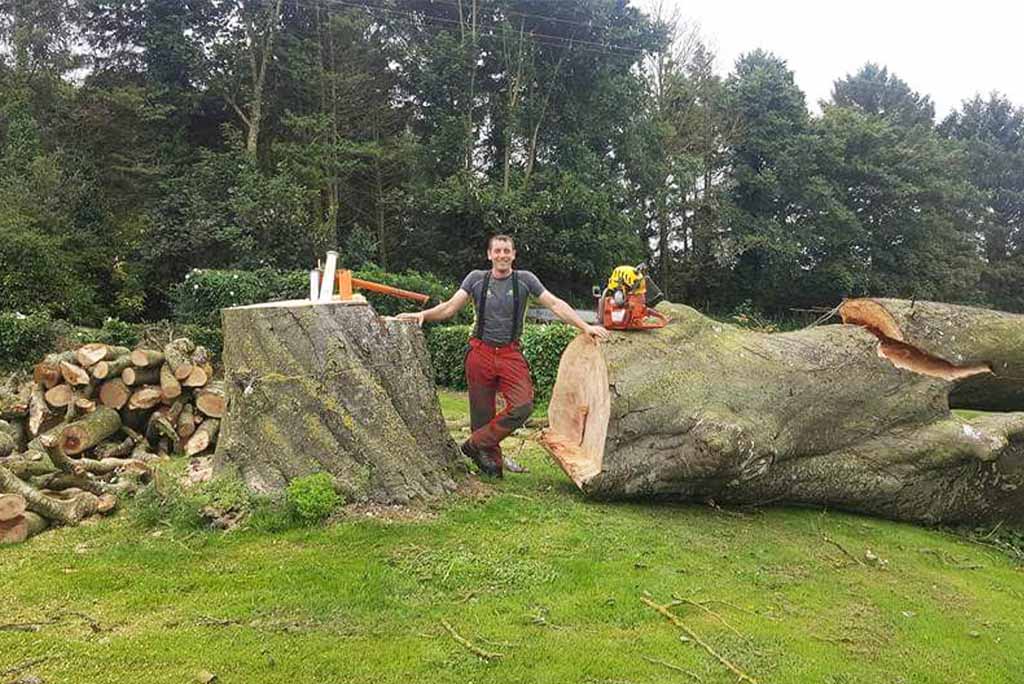Sustainable Plant Care Techniques for Residents
Tending for trees is an important aspect of maintaining a healthy and eco-friendly ecosystem in our homes and communities. As property owners, we often overlook the majestic giants that provide shade, beauty, and countless ecological benefits. Yet, just like any other living entity, trees require adequate care and attention to thrive. This is especially true when it comes to tree felling, a task that, when necessary, should be approached with care and consideration.
In our pursuit of sustainability, it is important to comprehend not only how to nurture trees but also when it might be essential to remove one. Trees can experience from diseases, insects, and natural stressors that may lead to the challenging choice of removal. However, eco-friendly tree care methods can help us minimize the need for such measures. By implementing strategies that enhance the well-being of our trees and neighboring ecosystems, we can ensure that our outdoors remain lively and foster biodiversity.
Grasping Arbor Well-Being
Preserving the well-being of arborescent organisms is crucial for the dual purposes of nature's equilibrium and the visual appeal of your landscaping. Healthy trees offer countless advantages such as canopy cover, beauty, and homes for wildlife. To ensure your arborescent organisms thrive, it's necessary to identify the indicators of good health, which consist of healthy foliage, strong branches, and a robust stem. Consistent checking for insects, diseases, and ecological threats can help you identify potential issues before they escalate.
The quality of soil plays a crucial role in tree health. Trees depend on their root systems to take in nutrients and moisture, which largely come from the ground. Poor soil quality can cause limited growth and vulnerability to pathogens. Conducting soil tests can provide insights into nutritional content and pH balance, permitting you to enhance the ground as necessary. Applying mulch can also assist conserve moisture and boost soil quality over time.
Another important aspect of the health of trees is proper moisture supply and maintenance techniques. During dry spells, trees may need extra watering to ward off stress, while excess moisture can cause root rot. Pruning aids to take away diseased boughs and encourages vigorous growth by facilitating increased light and air circulation. Knowing the specific needs of each tree species in your landscape will help you to provide the best attention, guaranteeing the endurance and robustness of your arborescent organisms.
At what time as well as The methods to Harvest Trees Sustainably

Felling trees in a sustainable way requires understanding the right time and technique to execute it. The ideal time for tree harvesting is during the end of winter or the beginning of spring when trees are in their resting phase. This minimization of timing reduces the stress on the tree and surrounding ecosystem, allowing for better regrowth for remaining vegetation. In addition, it helps stop the spread of pests and diseases that can be more prevalent during the hot months.
In advance of harvesting a tree, it is crucial to inspect its health and the adjacent area. Look for symptoms of infection, decayed limbs, or structural risk. Speaking with an expert can provide key insights into whether harvesting is necessary. If the tree creates a threat to structures or humans, ensure that safety measures are in place, including cleaning the area around the tree and using suitable safety equipment.
When it comes to the true felling process, adhere to sustainable practices by using efficient methods that minimize waste. Employing the directional felling method can help direct the tree's collapse and lessen impact to surrounding plants. After felling, consider using the wood responsibly, whether for firewood, landscaping material, or even lumber, to ensure that the tree continues to serve a purpose rather than being wasted.
Post-Felling Care and Replanting
Following a tree has been cut down, it is crucial to manage the site responsibly. Start by clearing away all debris, including branches and stump remnants, to avoid any potential hazards. Consider using a stump grinder to get rid of the stump completely, as this not only improves the aesthetics of your yard but also prevents pests and diseases from taking hold in rotting wood. In spez-ag.ch , ensure that any remaining roots do not get in the way with future planting or landscaping efforts.
Once the area is cleaned up, reflect on replenishing your landscape with new trees or plants. Choose species that are suitable to your local environment and soil conditions. Choosing native species can increase local biodiversity and may require less maintenance over time. When planting, ensure proper spacing and planting depth, and provide adequate water to help your new trees grow strong root systems. Timing your planting during the correct season can also improve the success rate of your new additions.
In conclusion, put into place a care regimen for your newly planted trees. Regular watering, mulching, and monitoring for pests and diseases will help them thrive. It’s important to provide support for young trees, especially in windy conditions. By adopting sustainable practices, you contribute to a better ecosystem while beautifying your home and ensuring that your landscape thrives for years to come.